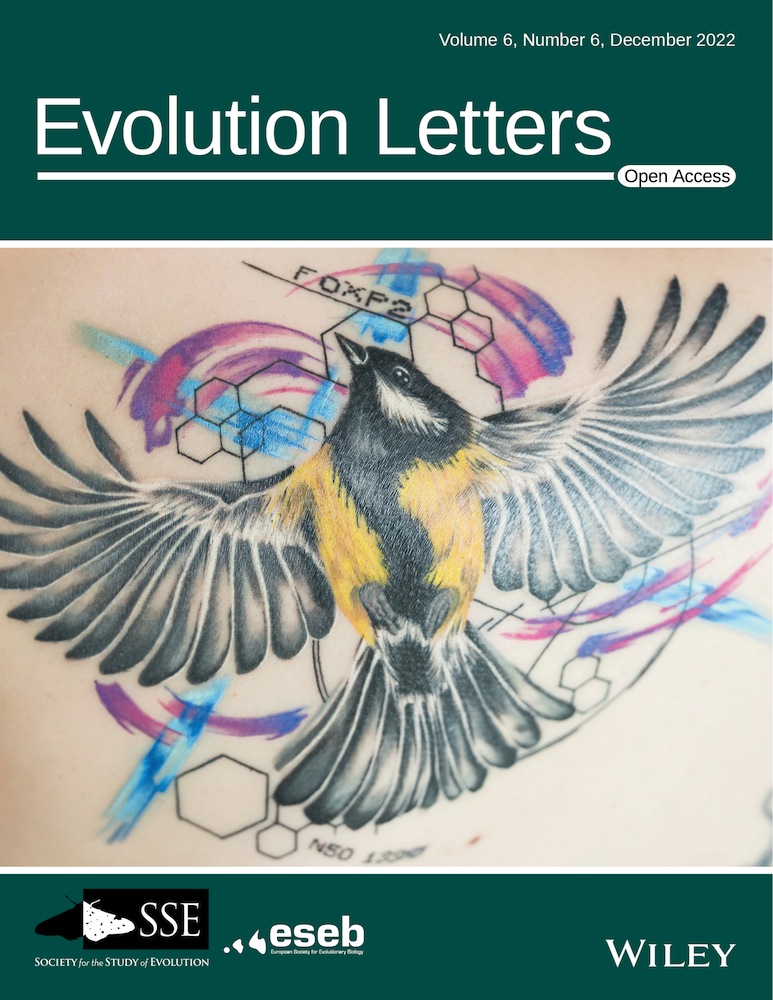Experimental evidence that network topology can accelerate the spread of beneficial mutations
IF 3.7
1区 生物学
Q2 EVOLUTIONARY BIOLOGY
引用次数: 8
Abstract
Abstract Whether and how the spatial arrangement of a population influences adaptive evolution has puzzled evolutionary biologists. Theoretical models make conflicting predictions about the probability that a beneficial mutation will become fixed in a population for certain topologies like stars, in which “leaf” populations are connected through a central “hub.” To date, these predictions have not been evaluated under realistic experimental conditions. Here, we test the prediction that topology can change the dynamics of fixation both in vitro and in silico by tracking the frequency of a beneficial mutant under positive selection as it spreads through networks of different topologies. Our results provide empirical support that meta-population topology can increase the likelihood that a beneficial mutation spreads, broaden the conditions under which this phenomenon is thought to occur, and points the way toward using network topology to amplify the effects of weakly favored mutations under directed evolution in industrial applications.实验证据表明,网络拓扑结构可以加速有益突变的传播
种群的空间分布是否以及如何影响适应进化一直困扰着进化生物学家。理论模型给出了相互矛盾的预测,即对于像恒星这样的特定拓扑结构,“叶子”种群通过一个中心“枢纽”连接在一起,有益突变在种群中固定下来的可能性。到目前为止,这些预测还没有在现实的实验条件下进行评估。在这里,我们通过跟踪正选择下的有益突变体在不同拓扑网络中传播的频率,来测试拓扑结构可以改变体外和硅中固定动力学的预测。我们的研究结果提供了实证支持,即元种群拓扑可以增加有益突变传播的可能性,拓宽了这种现象发生的条件,并指出了在工业应用中使用网络拓扑来放大定向进化下弱有利突变的影响的方法。
本文章由计算机程序翻译,如有差异,请以英文原文为准。
求助全文
约1分钟内获得全文
求助全文
来源期刊

Evolution Letters
EVOLUTIONARY BIOLOGY-
CiteScore
13.00
自引率
2.00%
发文量
35
审稿时长
10 weeks
期刊介绍:
Evolution Letters publishes cutting-edge new research in all areas of Evolutionary Biology.
Available exclusively online, and entirely open access, Evolution Letters consists of Letters - original pieces of research which form the bulk of papers - and Comments and Opinion - a forum for highlighting timely new research ideas for the evolutionary community.
 求助内容:
求助内容: 应助结果提醒方式:
应助结果提醒方式:


